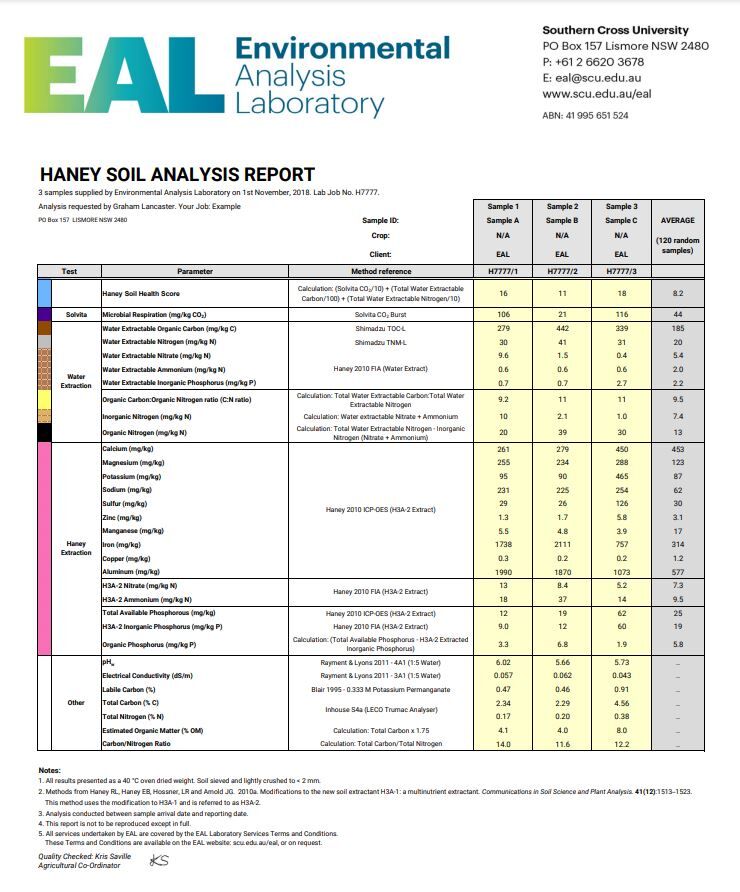Soil Testing
NRLinks uses EAL Laboratory at Southern Cross University to undertake soil testing. For regenerative/sustainable Agriculture I use the Haney Soil test to determine not only the chemical components of the soil but the overall soil health.
The soil health tool is an integrated approach to soil testing using chemical and biological soil test data; it is designed to mimic nature’s approach to soil nutrient availability as best we can in the lab. This tool is the culmination of nearly 20 years of research in soil fertility and I believe it represents the next step in soil testing for the 21st century. This tool is designed to answer some simple questions:
- What is your soil’s condition?
- Is your soil in balance?
- What can you do to help your soil?
The Soil Health Tool is designed to work with any soil under any management scenario because the program asks simple, universally applicable questions. The methods use nature’s biology and chemistry by using a soil microbial activity indicator, a soil water extract (nature’s solvent), and the H3A extractant, which mimics the production of organic acids by living plant roots to temporarily change the soil pH thereby increasing nutrient availability. These organic acids are then broken down by soil microbes since they are an excellent carbon source, which returns the soil pH to its natural, ambient level. The tool uses an integrated approach to soil testing, reflecting the complex ecosystem of the soil, instead of depending upon the narrow measurement of inorganic N, P, and K. The integrated approach is naturally controlled so that N or P will not exceed what is available from the organic N and organic P pools.

